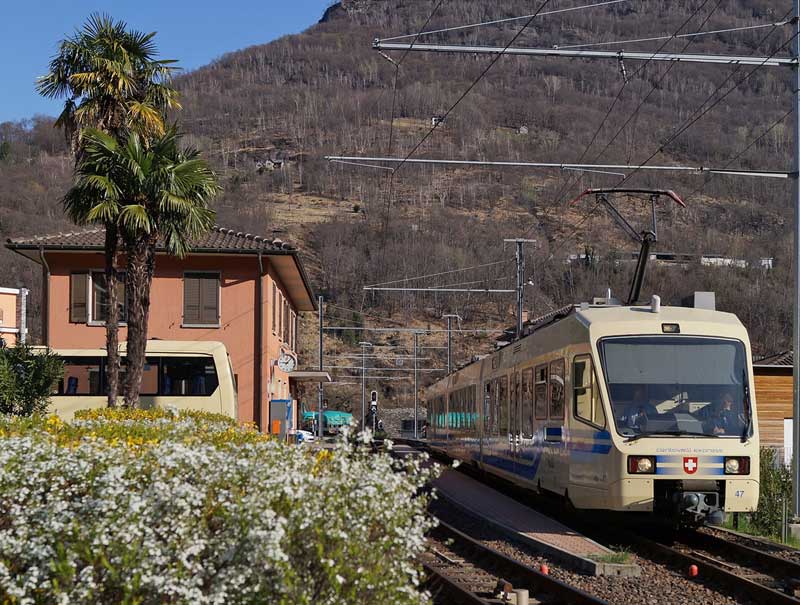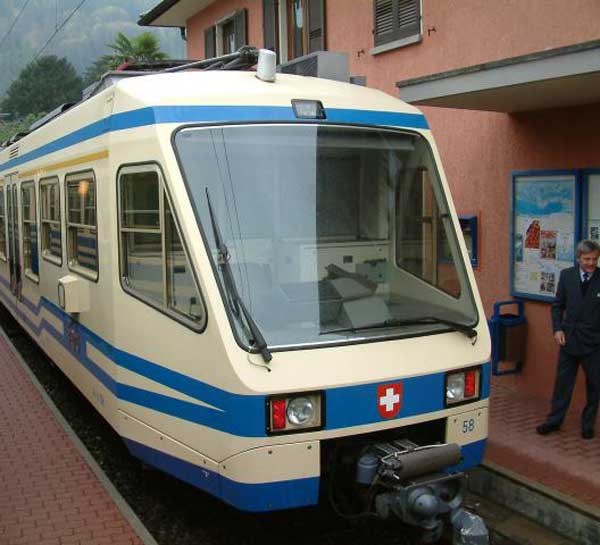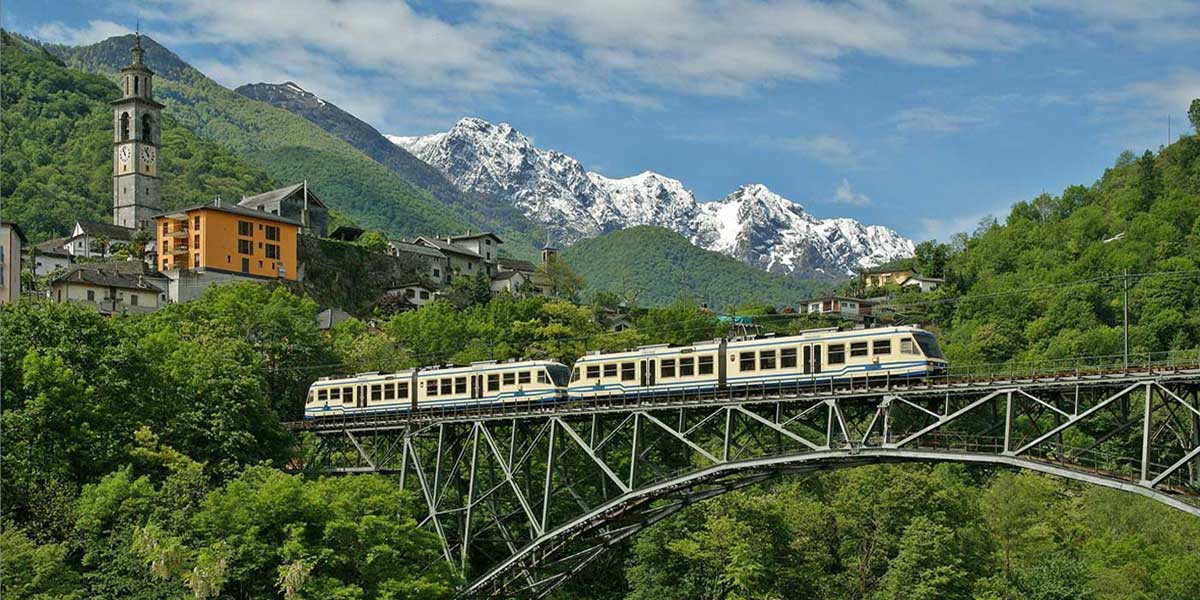Centovalli Railway, Switzerland - Italy

This scenic train between Locarno and Domodossola runs through the magical "Hundred Valleys" - the Centovalli. It offers some of the most beautiful views in Europe. The Centovalli Railway is fully included in a Eurail pass.
On the ride between Domodossola and Locarno you can see gushing waterfalls, vineyards, chestnut forests and villages that time forgot, roll by your window. Unspoiled landscapes and lush vegetation change their appearance in the course of the seasons and make this journey an unforgettable experience. Centovalli Railway runs all year long with 1st and 2nd class and panoramic coaches.
Locarno - Intragna - Centovalli - Domodossola
Distance: 52km, two hours

The Route
The Centovalli Railway is 52 km of narrow gauge rail line which connects the Gotthard Pass rain line and Simplon Pass rail line, connecting the Ticino region and the Swiss Valais to by the shortest route. It utilises 83 bridges and 34 tunnels beginning in Locarno and terminating in Domodossola, Italy, with stops in Intragna, Camedo, and S. Maria Maggiore.
The Centovalli is one of the the most beautfiul scenic routes in southern Switzerland, winding over stunningly high viaducts, along deep ravines and past Alpine waterfalls, leading from wine vieyard covered hillsides, through forests of Chestnut trees, through tunnels and around sharp hair-raising bends through the the Hundred Valleys and the Valle Vigezzo.
The blue and white liveried train takes a route through the Centovalli, the watershed of the wild Melezza River from Locarno on Lago Maggiore in Ticino Switzerland to Domodossola in Italy in about two hours. This is a scenic alternative to the Gotthard line from Brig via Andermatt. The Centovalli Railway runs all year long with with departures hourly with 1st class, 2nd class and panoramic coaches.
Tickets cannot be purchased on the train, but must be bought from station machines or ticket window. Eurail Passes are good for the Centovalli if including Switzerland and Italy. The train operates as part of the Swiss transportation System and Swiss Passes are valid for the full line as well, even the Italian part, connecting back into Switzerland. The Italian operated panoramic version of the train is called the Vigezzo Vision Panoramico.
The Journey
The narrow gauge electric train, run jointly by Italy's SSIF Railway and Switzerland's Centovalli (hundred valleys) Railway, winds its way slowly up the mountainside from Domodossola. Every twist gently jerks the passengers from side to side but rewards them each time with a new view of the terracotta buildings of the city below.
The first stop after tackling the steepest part of the climb is Trontano, a village surrounded by small vineyards. The gnarled vine stocks are bound to bent wooden posts and beams, as was the practice when the monastery held sway in Trontano. Little has changed in Trontano - from the train window at least - or many of the other villages in Italy's Vigezzina valley and Switzerland's valley of the "hundred valleys" since the building of the railway nearly 80 years ago.
Hikers cherish the access it provides to the large network of trails through the wild and unspoilt "hundred valleys" and culture seekers hop on and off the train to discover the many medieval villages and hamlets clinging to the steep slopes.
The train reaches the railway's highest point when it stops at Santa Maria Maggiore at 816 metres above sea level. It then passes through high stands of pine trees before beginning the slow descent towards the Swiss border. After the village of Rű, dominated by a grandiose church - an odd mix of Gothic arches and Byzantine domes - the valley narrows abruptly and the tracks skirt along a gorge.
At Camedo, a simple greeting is all that marks the handover between the Italian and Swiss crews. It's the sign of an enduring partnership between the two railways which goes back to the early 20th century.
After leaving Camedo, the gorge seems to swallow up the tracks. At one point, the train travels close to the bottom before entering a tunnel. When it emerges a few seconds later, passengers are surprised to find that they are suddenly a couple of hundred metres above the ravine.
At Verdasio, a few passengers get out and take the cable car that spans the gorge on its way up to the village of Rasa. The only other way to get to the village is on foot. Many of Rasa's original stone houses have been carefully restored as holiday homes, and are occupied mainly during the summer months.
The train crosses a high steel bridge after Intragna, marking the end of the Centovalli. The crossing also bridges the gap between two very different climate zones, with the landscape suddenly taking on a bright Mediterranean air; Passing palm trees set in lush gardens, the descent to Locarno and Lake Maggiore begins.
The last stop before Locarno is Ponte Brolla. Outside its depot is the train that took part in the inaugural run of the railway in 1923. It has since been put back into service during the busy summer season, and its interior, with first, second and third class seating, has been faithfully restored.
Nearing Locarno, the train enters the final tunnel, which takes it below the small city. The modern Locarno station for the Centovalli Railway is the end of the line and located directly beneath the city's main railway station. For visitors arriving in Locarno from other points of the compass, the secret to a spectacular journey through Switzerland's valley of the "hundred valleys" lies under their feet.
Text: Swissinfo


